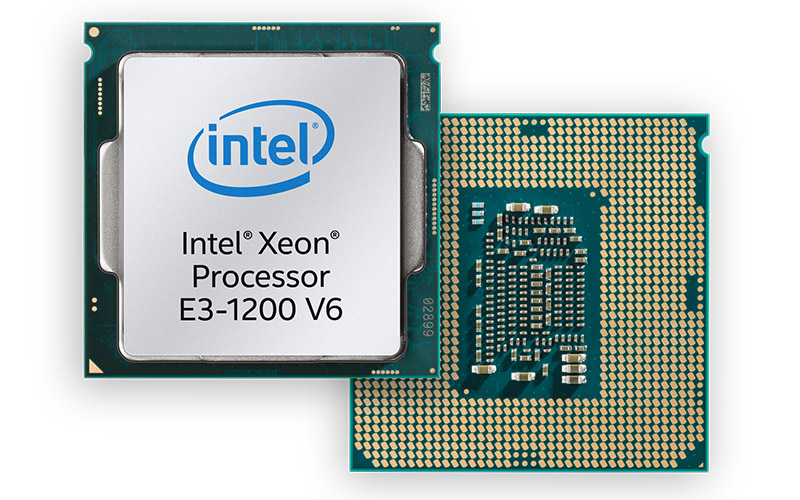In seemingly annual succession, we now have a new generation of Intel Xeon E3 processors. The Intel Xeon E3-1200 V6 series is the newest Kaby Lake-based generation of Intel processors for lower-end single socket server and workstation workloads.
Market Positioning
We did want to clear up a few items around market positioning. Although in most markets, the lowest cost products are the highest volume, most analysts peg the Intel Xeon E3 series at a fraction of the higher-cost Xeon E5 series. Here is how Intel sees its stack:
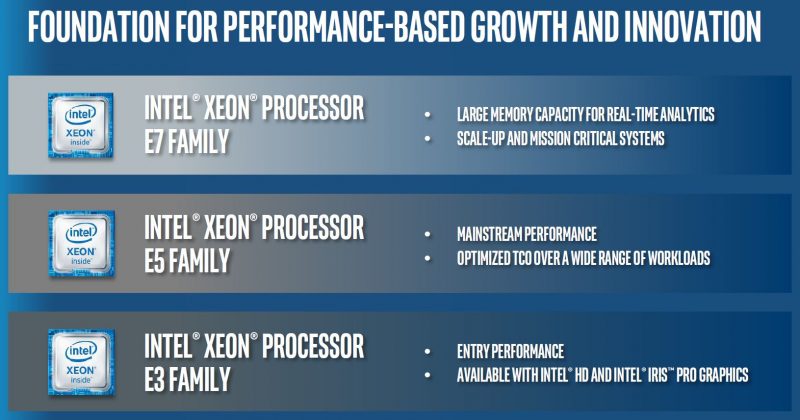
One of the largest reasons for this is virtualization. To illustrate this here is a sample of currently available Intel Xeon platforms along with Intel Atom C3000. We are omitting the E7 line simply because it does not compete in the single socket market:

The two major points here are that the Intel Xeon E3-1200 V6 series still lacks RDIMM support as well as higher RAM capacity. When it comes to virtualization, adding more cores and more RAM to a platform is the most commonly followed path. If we look at Intel positioning, the market segments are geared toward lower-end applications.
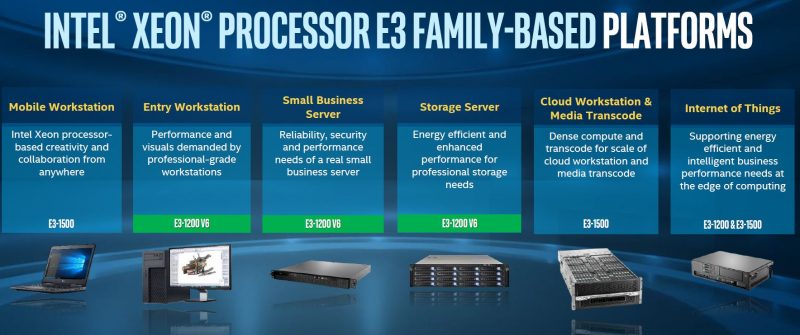
If you have an appliance like the Netgear ReadyNAS 4312X we reviewed, or are providing dedicated servers for web hosting, the 64GB RAM capacity is not a major limitation and the Intel Xeon E3-1200 V5 / V6 series is a great fit. The Intel Xeon E3-1200 V6 series also boasts high clock-speeds and latest generation IPC enhancements which make it a great fit for smaller database applications that do not need more RAM. If you have a MySQL database or a single threaded server bound workload, whether that is a Minecraft server or a Ruby on Rails app, the Intel Xeon E3-1200 V6 series can provide something unique.
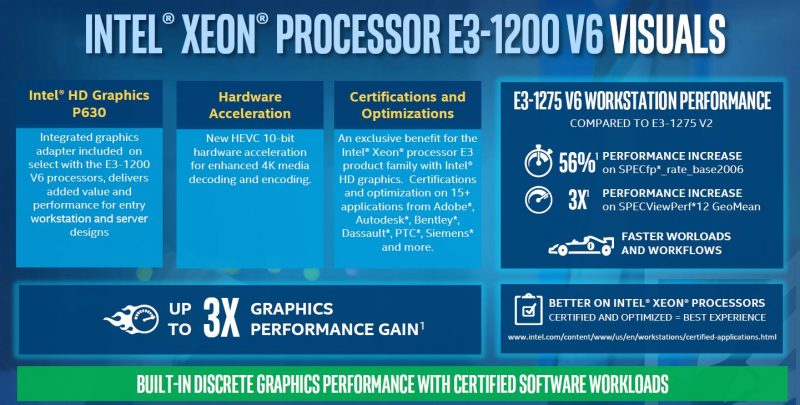
Along with the Xeon E3-1500 series, these are also the only Intel server CPUs with GPUs and therefore features like QuickSync acceleration which provides a massive performance boost in many applications.
The Intel Xeon E3-1200 V6 Lineup
To keep the chart clean, each Intel Xeon E3-1200 V6 part fits in the LGA 1151 socket and has 8MB L3 cache.

The SKUs will share the LGA1151 Xeon E3-1200 platform with some enhancements such as the DDR4-2400 support.
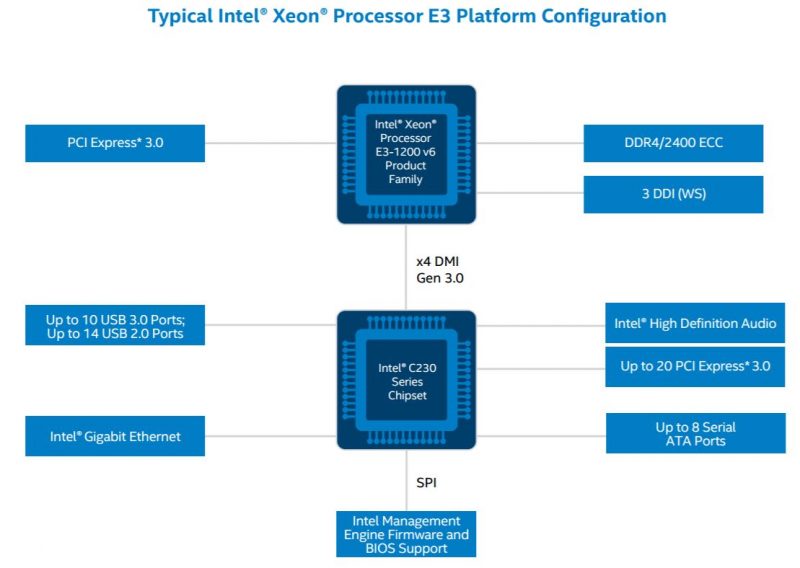
Although we have deployed many Intel Xeon E3-1220 and E3-1225 servers since the V1 generation, we generally recommend starting at the Intel E3-1230 V6 SKU unless you have a specific reason to go lower (e.g. trying to save every dollar.) TDP in this generation holds steady at 72-73W which is impressive since the three SKUs with active integrated GPUs see only a 1W TDP bump. In our experience, actual maximum power consumption for the parts without GPUs will be lower.
Here are Intel’s key highlights for the E3-1200 V6 series:
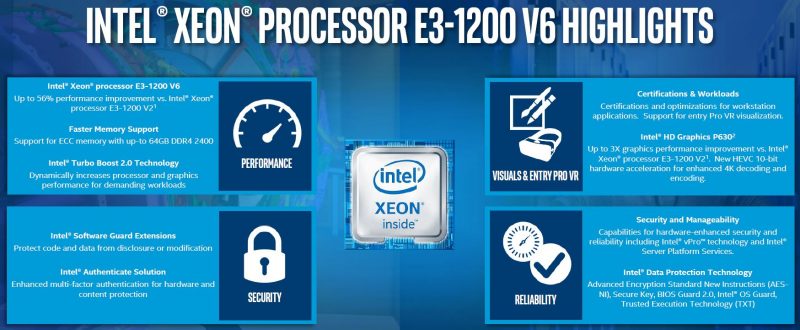
You may notice that the company is claiming up to a 56% performance boost over the Intel Xeon E3-1200 V2 generation. The E3-1200 V2 generation was launched in Q2, 2012 and is now and End of Life product. 56% is a solid gain, but this is four generations and almost five years later. The other major improvement is that the E3-1200 V6 series platform will have more memory bandwidth, lower total power consumption, more I/O and twice the RAM capacity of the V2 generation. If this were a larger market, we would likely see more competition and larger gains.
Final Words
We will have benchmarks posted in the not-too-distant future but we largely know how these will perform, much like the seventh generation Core i7 parts. For those building servers where GPU improvements of the Intel Xeon E3-1200 V6 will not be used, the update is an incremental performance bump. Given the same pricing, we recommend Intel Xeon E3-1200 V6 over the V5 generation. It is unlikely you will need to upgrade from the V5 generation or even the V3 generation. If you are buying new, we now recommend V6.

